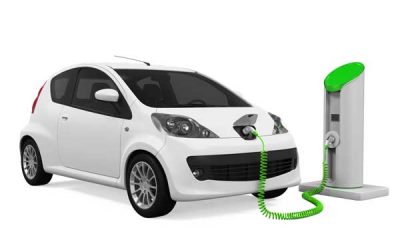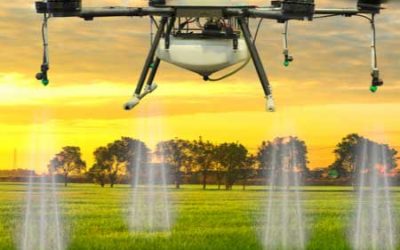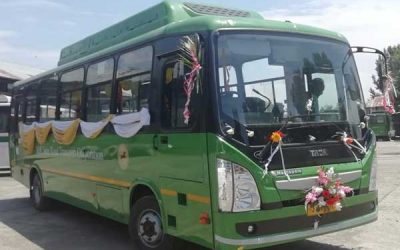Finnish multinational Nokia recently announced that it has collaborated with the Indian Institute of Science (IISc), one of India’s foremost institutes and university for research and higher education in science and engineering, to set-up the Nokia Center of Excellence (CoE) for Networked Robotics. Nokia’s CoE at IISc has some far-reaching potentials in the areas of 5G and artificial intelligence (AI).
The CoE would primarily focus on 5G-connected drones in emergency management, agriculture, and industrial automation.
Nokia mentions that the new facility will leverage the competencies of Bell Labs—a Nokia-owned industrial research and scientific development entity—to facilitate research and solutions development in areas such as robot orchestration, robot network controller, and human-robot interaction.
“Emerging technologies such as the 5G have the potential to enable an entirely new array of use cases with a profound societal impact. With Nokia’s rich innovation heritage, we aim to engage with the bright and young minds at IISc to nurture and advance the latest technologies that can benefit communities. We are confident that it will lead to the development of ground-breaking use cases,” Sanjay Malik, Senior Vice President and Head of India Market, Nokia, said in a statement.
According to Nokia, the critical research use cases in this effort will include drones for remote management of agricultural orchards to promote water conservation and avoid human contact with pesticides, gathering situational information, and applications like anticipating crop fires. The research at Nokia’s CoE at IISc will also include the use of connected robots in industrial automation.
Drone technology strengthened by 5G
Drone-based use cases are particularly exciting for a vast country like India, which needs intelligent, safer, and budget-friendly solutions to monitor and manage remote locations for various purposes. A couple of years ago, Reliance Jio, now the country’s largest telecom operator, showcased a robust 5G-enabled drone that could be used in security surveillance and detect threats through real-time monitoring from the sky. Jio is believed to be working on several new technologies by harnessing the power of 5G to create a strong impact soon. Jio and Ericsson had jointly developed the prototype.
One of the significant potentials of 5G technology is that it reduces the latency rate to one millisecond. This is phenomenally better in comparison to 4G technology, which offers an average latency of about 50 milliseconds (latency is the time taken by the signal to travel from the device to a cell tower). Hence, in such a scenario, 5G-enabled drones will leverage high-speed internet connectivity and technologies like AI to realize their full potential in real-time. For instance, such drones will be useful in disaster rescue operations and locating casualties during catastrophes through instant live-streaming footages.
For enterprises too, the drone technology could be of great help as it would enable them to keep a tab on their remote warehouses and delivery of goods and services even to the most distant of places, without much of human intervention.
A part of bigger 5G gameplan
Globally, everyone is eagerly waiting for the rollout of 5G technology. While the Covid-19 outbreak may have pushed the 5G deployment plans a bit further, the technology today holds more importance than ever before.
The remote-working environment and social distancing measures are likely to continue for a longer period, even once the outbreak of the pandemic subsides. In such a scenario, 5G is expected to drive enterprise and socially relevant digital transformation efforts by supporting several new-age technologies such as the internet of things (IoT), robotic process automation (RPA), facial recognition (FR), and machine learning (ML), among others, for efficiency gains.
Nokia’s CoE at IISc may be seen as one of the many steps to intensify its 5G prospects in the country. The initiative is in line with the Indian government’s efforts to promote innovation, strengthen the domestic ecosystem around new-age technologies, and foster economic growth. By collaborating with IISc, Nokia also has the opportunity to demonstrate its technological competency and network capabilities to the government.
It is notable in this context that Nokia has recently signed a deal of Rs 7,636 crore with Airtel to help the telco lay the foundation for providing 5G connectivity. The company is exploring several partnership models to expand its horizons in India.
The made-in-India angle
India, which is aggressively focusing on modern-day innovations to enable advanced facilities and infrastructure, even in the remotest of its areas, is being seen as a massive investment destination by multinationals.
With local sentiments growing for domestically manufactured products and services, global multinationals will continue to take a collaborative route to produce Made in India products.
Moreover, as the second-largest telecom market in the world, India also offers massive potential for 5G gear makers such as Nokia, Samsung, and Huawei. These companies will likely explore other possible routes as well to meet India’s domestic manufacturing requirements.














0 Comments